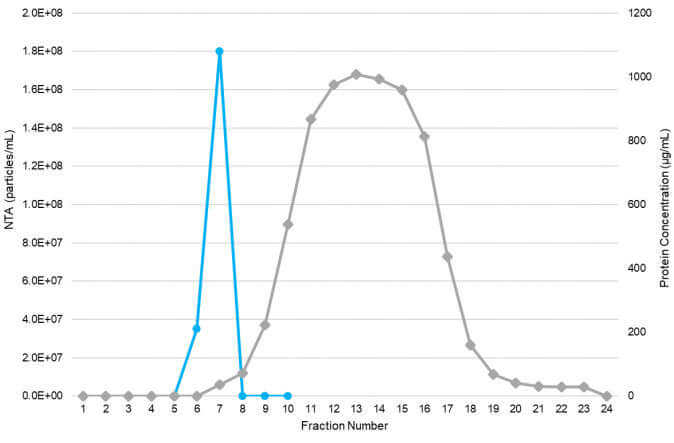DNA extraction kits from BioChain
Fast, accurate, and easy to use, BioChain’s DNA purification kits make life in the lab easier and enhance success
A reliable method for isolating high-quality exosomes
Exosome research plays an increasingly important role in therapeutics and diagnostics. Therefore, efficient and reliable methods for isolating exosomes are required.
Among other methods, size exclusion chromatography (SEC) is widely used for exosome isolation from all biofluids, as it demonstrates highly pure and concentrated samples. Moreover, SEC can be performed under different protocols, including centrifugation and gravity flow. Under gravity, one sample can be collected into fractions and analysed for a complete highresolution fractionation profile.
On this page, we highlight the Exo-spin™ mini-HD kit from Cell Guidance Systems as a novel tool to isolate exosomes from human serum as an example.
Exo-spin™ technology combines precipitation and SEC, making it superior to techniques that rely solely on precipitation which result in co-purification of large amounts of non-exosomal proteins and other material, as well as carryover of the precipitant.

This technique is ideal to achieve highly purified samples in which exosomes are separated from other non-exosomal components, and it is compatible with both low and high initial sample volumes.
10 ml of human serum starting volume was obtained from Cambridge Bioscience (UK).
Subsequently, 100 µl of this sample was added to the Exo-spin™ mini-HD column, followed by 100 µl of PBS then 23 x 200 µl PBS, until 24 fractions of 200 µl were collected. Consequently, the resulting fractions were analysed and a fractionation profile generated.

From fractions 1 to 5, no exosomes were eluted from the Exo-spin™ miniHD column. Fractions 6 and 7 contain the exosomes, with peak exosome concentration in fraction 7, and ultra-low protein contamination in both of these fractions. The vast majority of proteins present in the sample elute in the subsequent fractions.
The exosome concentration of the human serum sample was performed prior to the isolation and 80% recovery was measured.
The Exo-spin™ mini-HD allows a high-resolution fractionation protocol for starting sample volumes from 1 to 75 ml (cell culture media, urine, saliva, CSF, and any other low-protein biofluids) and from 1 to 150 µl blood sample (plasma and serum). As the Exo-spin™ mini-HD operates by gravity, no special equipment is required.
| Exo-spin™, 5 mini-HD columns (EX05-5) |
| Exo-spin™, 20 mini-HD columns (EX05-20) |
| Exo-spin™, 100 mini-HD columns (EX05-100) |
| Exo-spin™ buffer, 30 ml (EX06-30) |
| Exo-spin™ buffer, 250 ml (EX06-250) |
We gladly support you by keeping you updated on our latest products and the developments around our services.